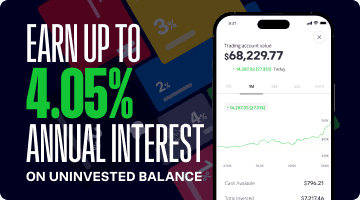What are the key drivers of copper price movements?
Copper prices are influenced by macro and industry-specific trends. Structurally, the global shift toward electrification in electric vehicles, renewable energy (particularly wind and solar), and modern grid infrastructure is driving long-term demand for copper. This trend has expanded further with the rise of AI and data centers, which require substantial power and, by extension, copper-intensive systems.
China plays a central role in copper pricing, accounting for more than half of global demand. Its economic stimulus efforts, especially those focused on construction, manufacturing, and green energy, tend to push copper prices higher. Recently announced 2025 policies aimed at strengthening infrastructure and real estate have already provided a lift to short-term demand.
On the financial side, copper is priced in US dollars, meaning a stronger dollar can make copper more expensive for international buyers, hitting demand. Inflation and large-scale government investment in infrastructure generally support higher commodity prices. In contrast, elevated interest rates can dampen both demand and investor appetite for commodities like copper.
What’s the latest on copper supply and demand? (Is there a supply crunch coming?)
Copper supply is increasingly under pressure, raising concerns about a potential supply crunch. Chile and Peru, which are responsible for around 40% of global copper production, are grappling with serious challenges. In Chile, declining ore quality and ongoing water shortages are limiting output, while in Peru, political instability and frequent protests have disrupted mining operations and transport logistics.
On the demand side, the outlook is bullish. Major miners like BHP expect copper demand to surge by nearly 70% by 2050, primarily due to the accelerating global push toward electrification through electric vehicles, renewable energy, and grid upgrades. This forecast is echoed widely among commodity strategists and energy transition experts.
However, the supply side may not be able to keep up. Declining ore grades, especially in Chile, along with rising extraction costs and long project development timelines, are making it increasingly difficult to expand output quickly. BHP and others have warned that nearly half of today’s copper production could be at risk over the next decade if investment fails to ramp up. Some analysts are already predicting supply deficits could emerge as early as this year, hence the urgent need for new capital and development in the sector.
How have the recent tariff announcements (from Liberation Day onwards) impacted the copper price?
The recent tariff announcements, beginning with the Liberation Day measures, have created volatility in copper markets. The introduction of a potential 25% tariff on copper imports caught traders off guard, triggering a scramble to move physical copper into the US before the duties took effect. This rush pushed US copper inventories to their highest level in eight years, ultimately leading to a sharp decline in prices.
A subsequent 90-day tariff truce between the US and China briefly lifted market sentiment, with LME copper prices rising in the days that followed. However, the relief has been short-lived. While the truce is a welcome pause, its temporary nature and the absence of clear long-term trade policy leave markets on edge. This ongoing uncertainty continues to dampen investor confidence and may suppress upward price momentum in the near term.
How UK Investors Can Gain Copper Exposure
UK-based retail investors have several avenues to gain exposure to copper prices, depending on their risk appetite and investment strategy.
One of the most direct options is through exchange-traded commodities (ETCs) like WisdomTree Copper (LSE: COPA), which track the spot price or futures contracts of copper. These are ideal for investors seeking pure-play exposure to the metal itself, without the added exposure of mining company performance.
For those looking to benefit from the operational leverage of copper producers, copper miner ETFs such as the Global X Copper Miners ETF, listed in London under tickers COPX or COPG offer a basket of global mining firms. These funds tend to amplify movements in copper prices through equity exposure, potentially delivering higher returns (and risks) than the metal alone.
Another route is to invest directly in individual mining stocks on the London Stock Exchange. Companies like Antofagasta, Glencore, and Rio Tinto have significant exposure to copper, although they often generate revenue from other commodities as well.
Finally, diversified commodity funds and investment trusts, such as BlackRock World Mining Trust (BRWM) or JPM Natural Resources Fund, can provide broader exposure. These vehicles typically hold positions across multiple metals and mining companies, including those focused on copper, making them a useful option for investors seeking a more balanced approach.
This communication is for information and education purposes only and should not be taken as investment advice, a personal recommendation, or an offer of, or solicitation to buy or sell, any financial instruments. This material has been prepared without taking into account any particular recipient’s investment objectives or financial situation and has not been prepared in accordance with the legal and regulatory requirements to promote independent research. Any references to past or future performance of a financial instrument, index or a packaged investment product are not, and should not be taken as, a reliable indicator of future results. eToro makes no representation and assumes no liability as to the accuracy or completeness of the content of this publication.






